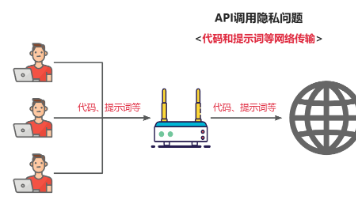Tensorflow-(2)使用tensorflow 2.0进行创建模型、训练、验证、测试、保存模型
安装并导入Tensorflow和依赖项:from __future__ import absolute_import, division, print_function, unicode_literalsimport osimport tensorflow as tffrom tensorflow import kerasprint(tf.version.VERSION)...
·
- 安装并导入Tensorflow和依赖项:
from __future__ import absolute_import, division, print_function, unicode_literals
import os
import tensorflow as tf
from tensorflow import keras
from tensorflow.keras.layers import Dense, Flatten, Conv2D
from tensorflow.keras import Model
print(tf.version.VERSION)
- 使用 MNIST 数据集
mnist = tf.keras.datasets.mnist
(x_train, y_train), (x_test, y_test) = mnist.load_data()
x_train, x_test = x_train / 255.0, x_test / 255.0
# Add a channels dimension
x_train = x_train[..., tf.newaxis]
x_test = x_test[..., tf.newaxis]
train_ds = tf.data.Dataset.from_tensor_slices(
(x_train, y_train)).shuffle(10000).batch(32)
test_ds = tf.data.Dataset.from_tensor_slices((x_test, y_test)).batch(32)
- 定义模型
使用 Keras 模型子类化(model subclassing) API 构建 tf.keras 模型:
class MyModel(Model):
def __init__(self):
super(MyModel, self).__init__()
self.conv1 = Conv2D(32, 3, activation='relu')
self.flatten = Flatten()
self.d1 = Dense(128, activation='relu')
self.d2 = Dense(10, activation='softmax')
def call(self, x):
x = self.conv1(x)
x = self.flatten(x)
x = self.d1(x)
return self.d2(x)
model = MyModel()
为训练选择优化器与损失函数:
loss_object = tf.keras.losses.SparseCategoricalCrossentropy()
optimizer = tf.keras.optimizers.Adam()
选择衡量指标来度量模型的损失值(loss)和准确率(accuracy)。
train_loss = tf.keras.metrics.Mean(name='train_loss')
train_accuracy = tf.keras.metrics.SparseCategoricalAccuracy(name='train_accuracy')
test_loss = tf.keras.metrics.Mean(name='test_loss')
test_accuracy = tf.keras.metrics.SparseCategoricalAccuracy(name='test_accuracy')
使用 tf.GradientTape 来训练模型:
@tf.function
def train_step(images, labels):
with tf.GradientTape() as tape:
predictions = model(images)
loss = loss_object(labels, predictions)
gradients = tape.gradient(loss, model.trainable_variables)
optimizer.apply_gradients(zip(gradients, model.trainable_variables))
train_loss(loss)
train_accuracy(labels, predictions)
测试模型:
@tf.function
def test_step(images, labels):
predictions = model(images)
t_loss = loss_object(labels, predictions)
test_loss(t_loss)
test_accuracy(labels, predictions)
保存模型
model_save_path = r"./model"
tf.saved_model.save(model, model_save_path)
加载模型
imported = tf.saved_model.load(model_save_path)
- 训练
ckpt= tf.train.Checkpoint(optimizer=optimizer, model=model)
manager = tf.train.CheckpointManager(ckpt, './tf_ckpts', max_to_keep=3)
EPOCHS = 20
ckpt.restore(manager.latest_checkpoint)
if manager.latest_checkpoint:
print("Restored from {}".format(manager.latest_checkpoint))
else:
print("Initializing from scratch.")
for epoch in range(EPOCHS):
train_loss.reset_states()
train_accuracy.reset_states()
test_loss.reset_states()
test_accuracy.reset_states()
for images, labels in train_ds:
train_step(images, labels)
if epoch % 10 == 0:
save_path = manager.save()
for test_images, test_labels in test_ds:
test_step(test_images, test_labels)
template = 'Epoch {}, Loss: {}, Accuracy: {}, Test Loss: {}, Test Accuracy: {}'
print (template.format(epoch+1,
train_loss.result(),
train_accuracy.result()*100,
test_loss.result(),
test_accuracy.result()*100))
-
根据测试数据集评估模型
见3中测试模型
更多推荐
 已为社区贡献1条内容
已为社区贡献1条内容









所有评论(0)